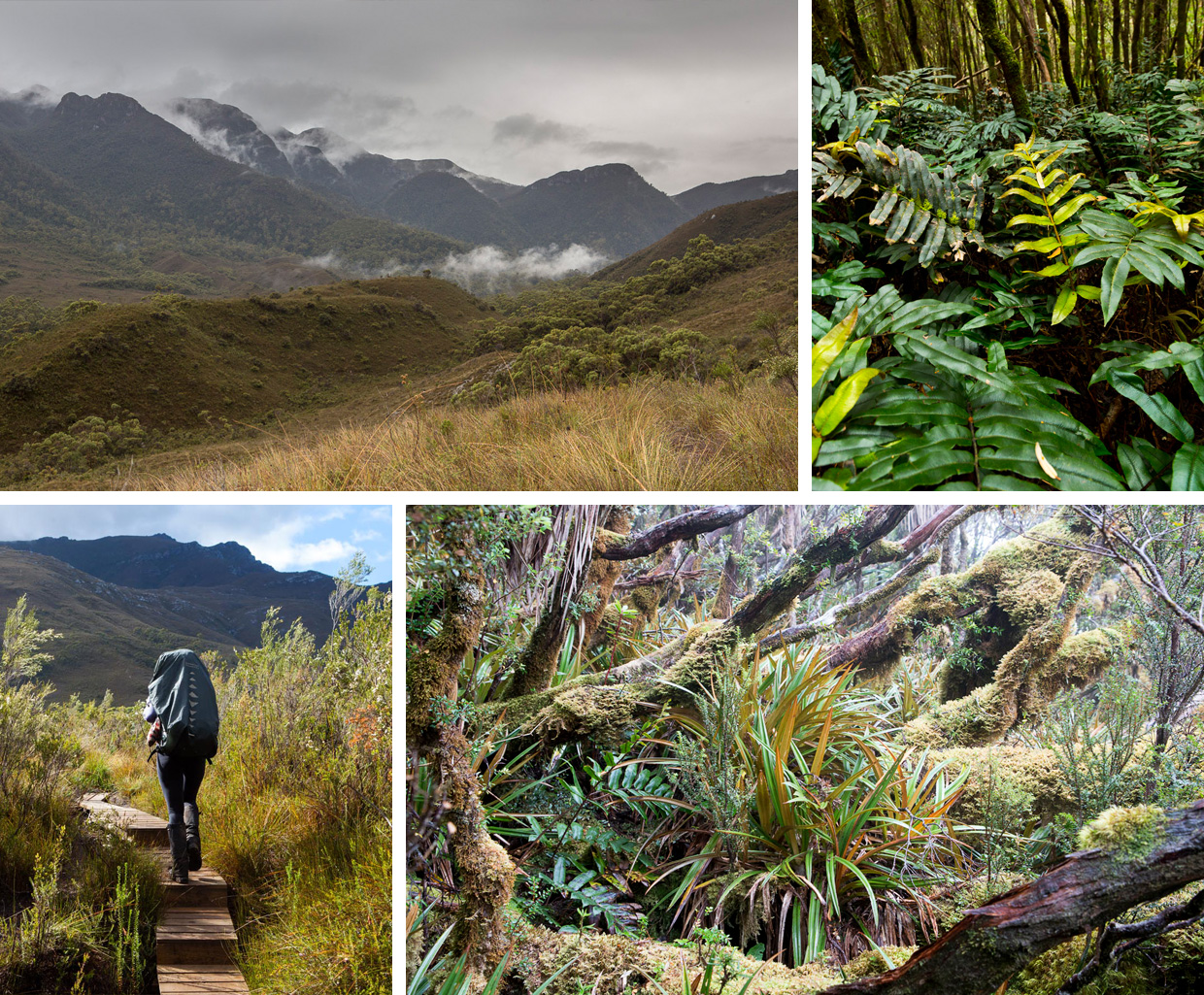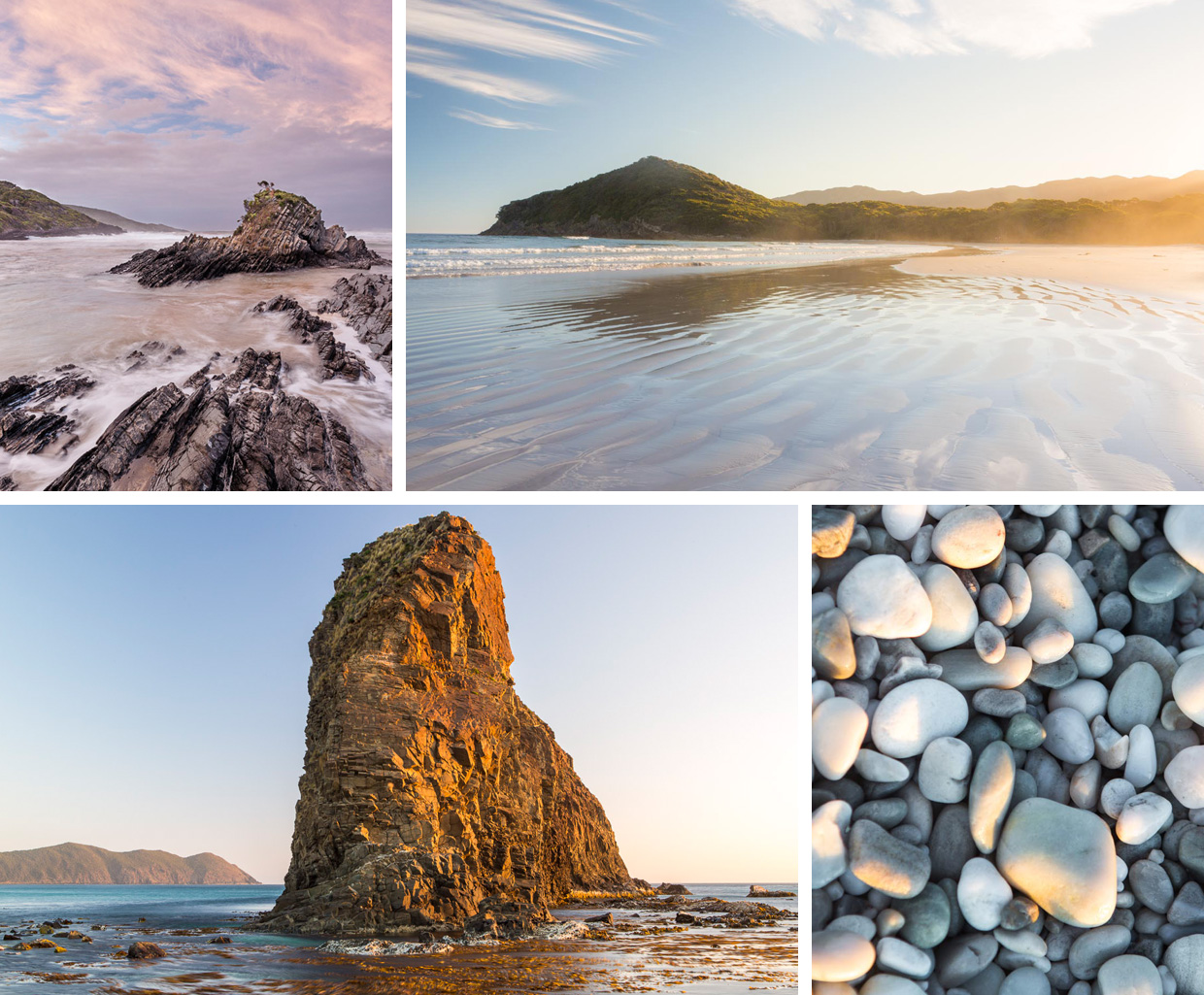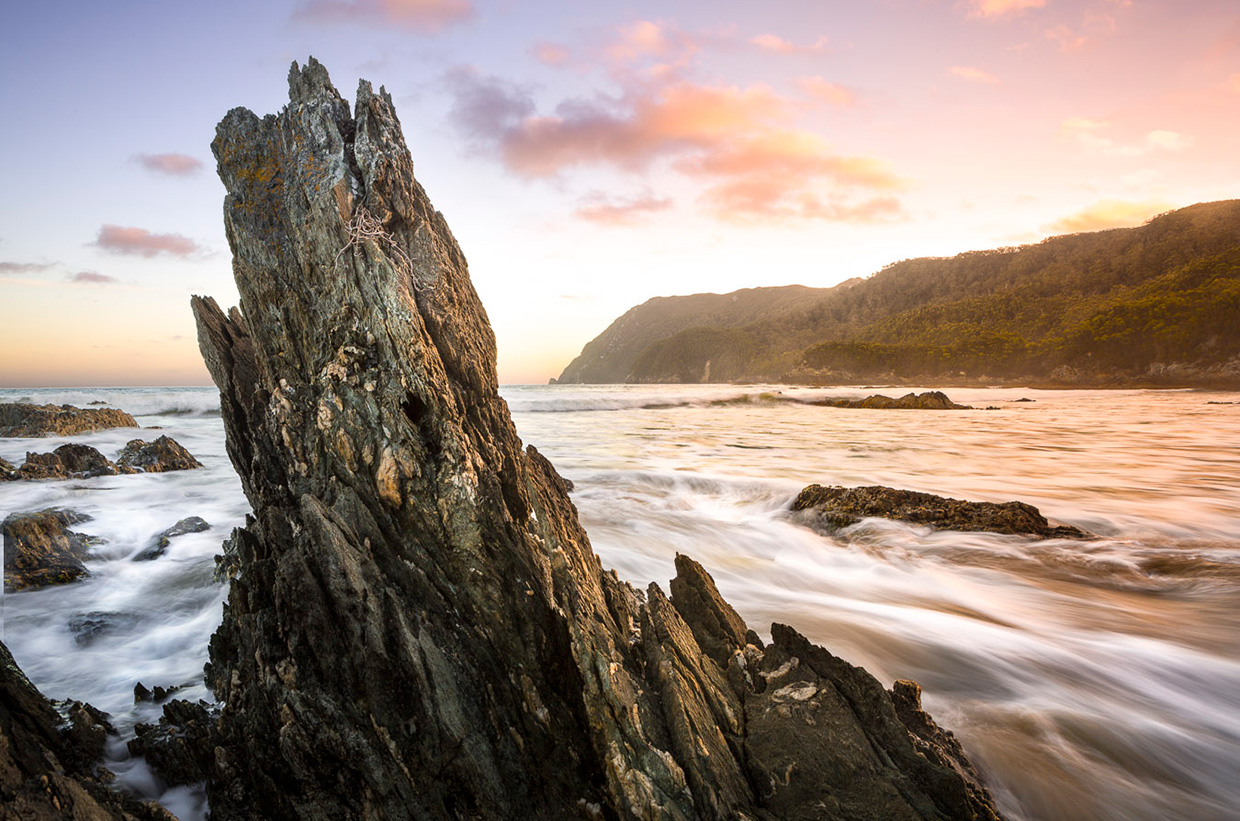Isolation
Written by James Forrest // Photography by Steven Pearce
I’m a fisherman shipwrecked on a remote, merciless coastline. A scraggly beard, ripped clothes and glazed look in my eyes tell of hardship endured. Walking east is my only hope of returning to civilisation. Leech-infested rainforests, mountain ranges, swamps and raging rivers stand in the way.
This is as far from home as I’ll ever be. I feel disconnected from real life and detached from normality, losing myself in a castaway daydream. But I haven’t really been washed ashore. I chose this challenge and I want to be here. I’m walking the 85km South Coast Track in Tasmania, one of the world’s great wilderness walks, in search of pure, untarnished isolation.
I turn a corner and freeze. A black tiger snake is just 3ft away, poised and watching me in the dirt. Adrenaline floods my system and I suddenly feel 100 per cent alert, wired into survival mode. I stand calm and still, trying to control my pounding heart and the rising fear.
Tiger snakes are deadly – their venom affects the central nervous system and causes both muscle damage and blood clotting. I’m a four-day hike from the antidote. Luckily, the odds are in my favour. Tiger snakes rarely attack unless provoked or stepped upon and usually dash for cover when they sense footsteps. I play a nervous waiting game and, after what feels like an eternity, it slithers away. I gulp, shake my head in disbelief and continue eastward.
Flotsam guides me – washed-up buoys, plastic containers and even rubber gloves, tied to trees to indicate the route. I walk along pristine beaches, mesmerised by the rolling, roaring surf. My boots crunch as they sink into the damp sand, leaving behind a trail of meandering footsteps. I wade across tannin-stained creeks, listening to the calls of parrots, and spot hopping wallabies and burrowing wombats as I squelch through wet moorlands.
This is magnificently remote. Solo and unsupported, I’m hiking deep into the Southwest National Park, Tasmania’s largest national park and a key part of the Tasmanian Wilderness World Heritage Area. It is a rugged land of faraway beaches, quartzite mountains, buttongrass plains and eucalyptus forests – and home to the unforgiving South Coast Track.
I walk along pristine beaches, mesmerised by the rolling, roaring surf. My boots crunch as they sink into the damp sand, leaving behind a trail of meandering footsteps. I wade across tannin-stained creeks, listening to the calls of parrots, and spot hopping wallabies and burrowing wombats as I squelch through wet moorlands.


I perch on a rocky outcrop and gaze down at Prion Beach, a thin strip of white sand that looks too perfect to be real. A gentle breeze ruffles my hair and the sun warms my neck. This is the escapism I came for.
Accessing the trail is not easy – like most hikers, I fly to the lonely airstrip at Melaleuca – but walking it is the real challenge. The route heads east for 85km, and meets no other tracks until a gravel road at Cockle Creek. In between there is nothing. No facilities, huts, emergency phones or resupply points. I must be self-sufficient, fit and determined. Every day I will carry all I need to survive on my back, drink water out of streams, rustle up dinner with a camping stove and sleep in my tent.
Two days in and I haven’t seen a soul. The isolation washes over me, cleansing and invigorating. No phone reception or Wi-Fi. No commuting, offices or deadlines. No screaming kids or blaring TV adverts. No everyday stresses or life’s little worries – just the glorious simplicity of putting one foot in front of the other.
I sit beside my tent the following morning, porridge bubbling away on the stove while currawongs – overly confident black birds – eye up my breakfast. Today I face a steep, exposed climb of 905m over the Ironbound Range. I strike gold. The sun is shining in a cloudless sky – lucky, as it rains on this coastline 250 days a year. As I ascend, the arc of Louisa Bay below is bathed in a golden glow, while the Western Arthur Mountains and Federation Peak loom large to the north.
I’m alone and grateful to be so. I’ve been backpacking for eight weeks, but only now do I truly believe I’m doing something unique. Everywhere I’ve been and everything I’ve done before has felt pre-packaged. I’m just one of a thousand travellers following the same routes in the same Lonely Planet book. ‘I just feel like everyone tries to do something different, but you always wind up doing the same damn thing’, to quote The Beach.
This, however, feels intimate and personal and raw. Undisturbed by other backpackers, the tranquility is never spoilt. My senses are heightened – I hear every sound, breathe in every smell, savour every view. Atop the Ironbound Mountains, I perch on a rocky outcrop and gaze down at Prion Beach, a thin strip of white sand that looks too perfect to be real. A gentle breeze ruffles my hair and the sun warms my neck. This is the escapism I came for.


But the solitude does have side effects. As I descend into a dark, dense forest, my wilderness-induced state of relaxation transforms into something more sinister. Paranoia and fear kick in. This is a nightmare of a track, a seemingly never-ending labyrinth of slippery tree roots determined to trip me up or twist my ankle. Every few metres I splash through puddles, slide in mud, and duck and dive under fallen trees. When dusk arrives, my mind starts playing tricks on me. Logs morph into Tasmanian tigers, even though I know the species was hunted to extinction by 1936, and sticks and roots shape-shift into poisonous snakes.
I start doubting my abilities. Am I strong enough for this? Will I make it to the end? Is it possible to complete the 200m crossing of New River Lagoon alone? The morbid name of my destination – Deadman’s Bay – doesn’t help. The story goes that in 1885 a dead whaler was discovered on the shore after failing to walk the coastline. The words of South Coast Track guidebook authors John and Monica Chapman buzz around my head: ‘walking alone is not recommended’. But I pull myself together and snap out of the negative spiral. I know I can do this.
Fast-forward to day six and I’m still going. In fact, I’m not just surviving – I’m loving life. I’ve embraced the isolation and I’m actually dreading returning to the real world. Lying in an improvised hammock made from rope salvaged from the ocean, I watch as a tiny leech squirms across my trousers, searching for blood. I look out into the surrounding vegetation, hoping to glimpse a Tasmanian devil, but sadly nothing stirs. These carnivorous marsupials are becoming increasingly rare as a facial tumour disease ravages their numbers.
I stroll down to Granite Beach where a waterfall tumbles off a cliff directly onto the sand. I stand naked under the refreshing natural shower, my crusty hair and grimy skin revitalised by the water. My spirits are buoyed up too. I need them to be. Ahead I must walk to Cockle Creek in a 20.5km push for the finish line, crossing the notorious knee-deep swamps of the South Cape Range in the process.
At midday I turn right along the path and bump into local hikers Peter, Bruce and Mick from Hobart, the capital of Tasmania. We talk about the need to protect this precious wilderness in a rapidly changing world. I’m glad to have seen this place – to have escaped from well-worn paths and experienced true isolation. Today, when it seems that every possible corner of the world has been mapped, explored and written about, it’s amazing to be able to come to places like this and find your own way.
James Forrest is a former newspaper reporter turned adventure travel writer. He is passionate about hiking, mountains and exploring wild places.
Website: jamesmforrest.com
Facebook: /jamesmichaelforrest
Instagram: @jamesmichaelforrest
Twitter: @jamesmforrest
Steven is an award-winning photographer who specialises in wilderness and adventure photography. He was the creative director for The Tree Projects and is the driving force behind all of the deliverable content. Willing to push the boundaries and embrace the latest technologies, Steve is able to produce content that is unique, beautiful and inspiring. As an avid tree climber and a passionate naturalist, he has spent over 10 years documenting forests, the canopy of trees and the scientists who study them.
Website: thetreeprojects.com
Facebook: /thetreeprojects



